Betavolt’s Nuclear Battery: A Revolutionary Power Source for the Future
Introduction
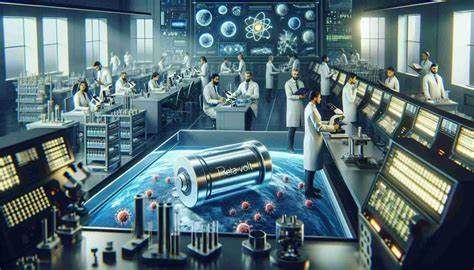
In a groundbreaking development, Beijing-based startup Betavolt has unveiled a nuclear battery (betavolt’s nuclear battery)that promises to revolutionize the way we power our devices. This cutting-edge technology harnesses atomic energy, allowing for 50 years of continuous electricity generation without the need for charging or maintenance. Let’s delve into the details of this remarkable innovation.
Table of Contents
The Birth of Betavoltaic Nuclear Battery
A betavoltaic device, also known as a betavoltaic cell or betavoltaic battery, is a type of nuclear battery that generates electric current from beta particles (electrons) emitted by a radioactive source. These devices utilize semiconductor junctions to convert the energy from beta decay into usable electrical power. One common radioactive source used in betavoltaics is the hydrogen isotope tritium.
Here are some key points about betavolt’s nuclear battery:
- Non-Thermal Conversion: Unlike most nuclear power sources that generate heat and then convert it to electricity, betavoltaic devices directly convert the electron-hole pairs produced by beta particles interacting with a semiconductor material.
- Applications:
- Betavoltaic power sources are particularly well-suited for low-power electrical applications where long-lasting energy sources are needed. Examples include implantable medical devices, military equipment, and space applications.
- In the past, some pacemakers used betavoltaic batteries based on isotopes like promethium, but these were phased out as cheaper lithium batteries became available.
- Recent advancements have led to proposals for using betavoltaics to trickle-charge conventional batteries in consumer devices like cell phones and laptops.
- Efficient Semiconductors: Early semiconducting materials used in betavoltaics were not efficient at converting beta decay electrons into usable current. However, more efficient semiconductor materials are now available, allowing the use of relatively benign isotopes like tritium.
- Recent Developments:
- In 2024, a Chinese startup called Betavolt unveiled a groundbreaking betavoltaic battery. This miniature device contains a thin wafer with a source of beta particle electrons (either Carbon-14 or nickel-63), sandwiched between two thin crystallographic diamond semiconductor layers.
- The battery generates 100 microwatts of power and operates at a voltage of 3V. Remarkably, it has a projected lifetime of 50 years without any need for charging or maintenance.
How It Works
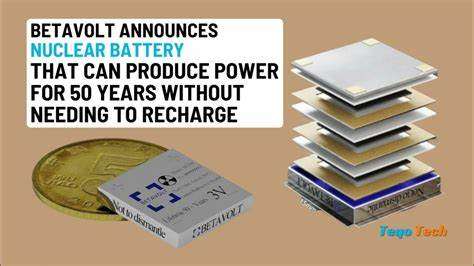
- Radioactive Source: The heart of the betavoltaic device is a radioactive source, typically an isotope that undergoes beta decay. Common isotopes used include tritium, carbon-14, and nickel-63. These isotopes emit beta particles (high-energy electrons) during decay.
- Semiconductor Junctions: The device contains semiconductor materials with a p-n junction (a boundary between p-type and n-type semiconductors). When beta particles interact with the semiconductor, they create electron-hole pairs.
- Energy Conversion: The electron-hole pairs generated by beta decay create an electric potential difference across the p-n junction. This potential difference drives an electric current through an external circuit connected to the device.
- Direct Conversion: Unlike traditional nuclear reactors that generate heat and then convert it to electricity, betavoltaics directly convert the kinetic energy of beta particles into electrical energy. This non-thermal conversion is more efficient for low-power applications.
- Efficiency and Longevity: Recent advancements in semiconductor materials have improved the efficiency of betavoltaic devices. Betavolt’s latest battery, for instance, generates 100 microwatts of power and has a projected lifetime of 50 years without recharging.
- Applications:
- Implantable Medical Devices: Betavoltaics are ideal for powering medical implants like pacemakers, where longevity and reliability are crucial.
- Space Exploration: In space missions, where solar panels may not be practical, betavoltaics can provide long-lasting power.
- Military Equipment: Remote sensors, surveillance devices, and other military equipment benefit from betavoltaic power sources.
- Betavolt’s Breakthrough: Betavolt’s recent innovation involves sandwiching a thin wafer with a beta particle source between two diamond semiconductor layers. This design optimizes energy conversion and extends battery life
Technical Specifications
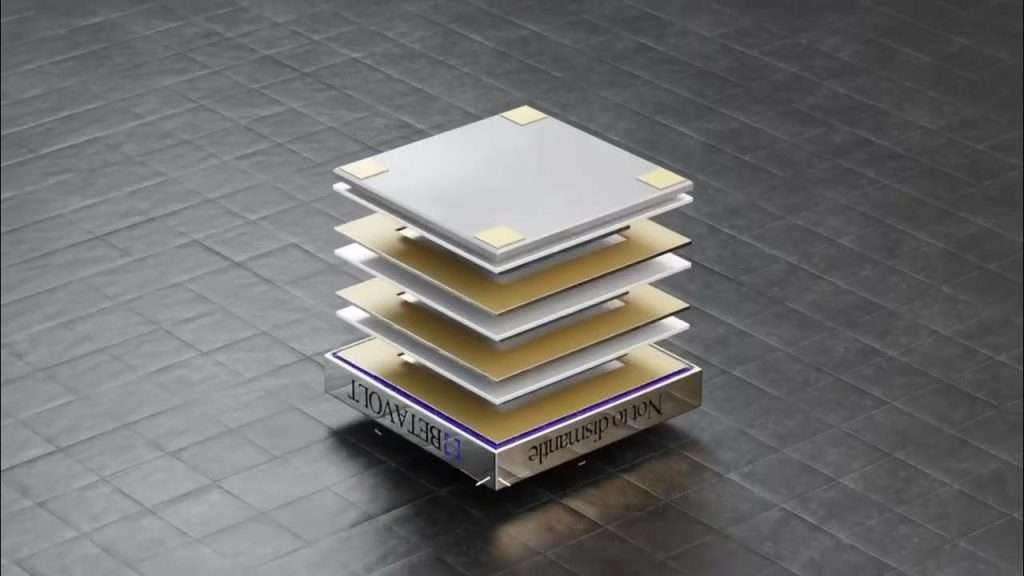
- Power Output: Betavolt’s latest betavoltaic battery generates an impressive 100 microwatts of power. While this may seem small, it’s sufficient for low-power applications where longevity is crucial.
- Voltage: The battery operates at a voltage of 3V. This voltage level ensures compatibility with various electronic devices and circuits.
- Lifetime: The most remarkable feature is its projected 50-year lifetime without any need for recharging or maintenance. This longevity makes it ideal for long-term deployments.
- Radioactive Source: Betavolt’s battery utilizes either Carbon-14 or nickel-63 as the radioactive source. These isotopes emit beta particles (electrons) during their decay process.
- Semiconductor Layers: The battery design involves sandwiching a thin wafer containing the radioactive source between two diamond semiconductor layers. This arrangement optimizes energy conversion efficiency.
- Applications:
- Implantable Medical Devices: Betavoltaics can power medical implants like pacemakers, ensuring reliable operation over decades.
- Space Exploration: In space missions, where sunlight may not be consistently available, betavoltaics offer a dependable energy source.
- Military Equipment: Remote sensors, surveillance devices, and other military equipment benefit from betavoltaic power.
- Efficiency: Recent advancements in semiconductor materials have significantly improved the efficiency of betavoltaic devices. Betavolt’s battery demonstrates the practicality of this technology.
Applications
- Implantable Medical Devices:
- Betavoltaics are ideal for powering medical implants such as pacemakers. These devices require long-lasting and reliable energy sources to ensure proper functioning over extended periods.
- The battery’s projected 50-year lifetime without recharging makes it suitable for implantable devices that need to operate seamlessly within the human body.
- Space Exploration:
- In space missions, where solar panels may not be consistently effective (e.g., during long-duration missions or in regions with limited sunlight), betavoltaics offer a dependable energy source.
- Space probes, rovers, and other equipment can benefit from the longevity and reliability of betavoltaic batteries.
- Military Equipment:
- Remote sensors, surveillance devices, and other military equipment often operate in challenging environments.
- Betavoltaic power sources provide a compact and durable solution for powering these devices without frequent maintenance or replacement.
- Consumer Electronics:
- While not widely adopted yet, there are proposals to use betavoltaics to trickle-charge conventional batteries in consumer devices.
- Imagine a cell phone or laptop that can recharge itself over decades without needing an external power source!
Global Impact
- Sustainable Energy Solutions:
- Betavoltaics offer a sustainable and long-lasting energy solution. Their projected 50-year lifetime without recharging reduces the need for frequent replacements, minimizing waste.
- As we transition toward cleaner energy sources, betavoltaics can play a role in providing reliable power without contributing to greenhouse gas emissions.
- Medical Advancements:
- The use of betavoltaic batteries in implantable medical devices ensures patient safety and reduces the need for invasive procedures.
- Patients with pacemakers, cochlear implants, or other medical implants benefit from extended battery life.
- Space Exploration:
- Betavoltaics address the energy challenges faced during space missions. In deep space or on distant planets, where sunlight may be scarce, these batteries provide a dependable power source.
- Space probes, rovers, and scientific instruments can operate efficiently for extended periods.
- Military and Defense Applications:
- Military equipment often operates in remote or hostile environments. Betavoltaic power sources offer a compact and reliable energy solution for surveillance devices, sensors, and communication equipment.
- The longevity of these batteries reduces logistical challenges in maintaining military assets.
- Consumer Electronics:
- While not yet widely adopted, the concept of betavoltaics trickle-charging conventional batteries in consumer devices has exciting implications.
- Imagine a world where your smartphone or laptop remains powered for decades without external charging!
- Reducing Dependence on Fossil Fuels:
- By providing an alternative energy source, betavoltaics contribute to reducing our reliance on fossil fuels.
- As technology improves, we may see more applications in everyday devices, further promoting sustainability.
Conclusion
In conclusion, Betavolt’s nuclear battery represents a remarkable achievement in the field of atomic energy. Let’s recap its key features:
- Efficient Energy Conversion: Betavoltaics directly convert the kinetic energy of beta particles into electrical energy using semiconductor junctions. Unlike traditional nuclear reactors, which generate heat and then convert it to electricity, betavoltaics offer non-thermal conversion.
- Applications:
- Implantable Medical Devices: Betavoltaics power medical implants like pacemakers, ensuring longevity and reliability.
- Space Exploration: In space missions, where sunlight may not be consistently available, betavoltaics provide a dependable energy source.
- Military Equipment: Remote sensors and surveillance devices benefit from betavoltaic power.
- Betavolt’s Breakthrough: Betavolt’s recent innovation involves sandwiching a thin wafer with a beta particle source between two diamond semiconductor layers. This design optimizes energy conversion and extends battery life.
- Technical Specifications:
- Power Output: 100 microwatts
- Voltage: 3V
- Lifetime: 50 years without recharging
- Radioactive Source: Carbon-14 or nickel-63
- Global Impact:
- Betavoltaics contribute to sustainable energy solutions, medical advancements, and reduced dependence on fossil fuels.
- Their impact spans medical care, space exploration, defense, and consumer electronics.
Do you like this post?
Also check this.
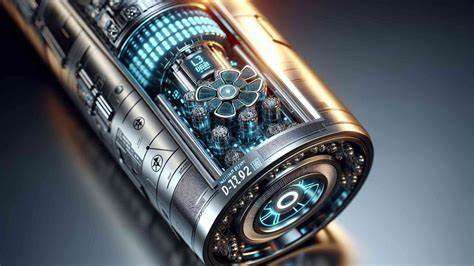





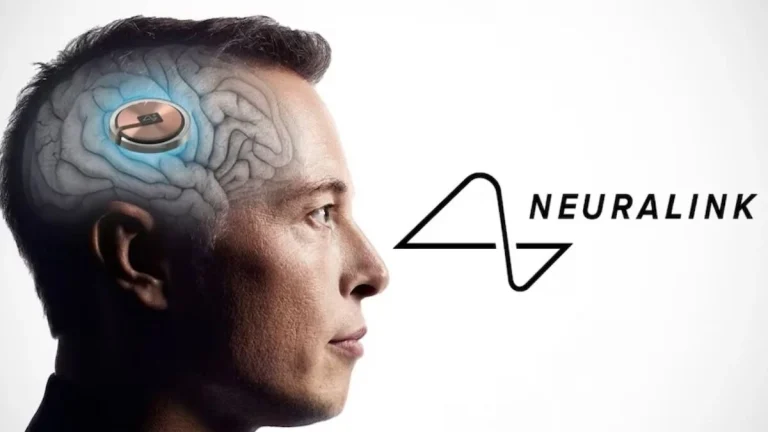
This is a great post!
Thanks for sharing. I read many of your blog posts, cool, your blog is very good.